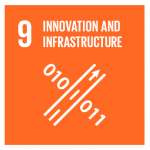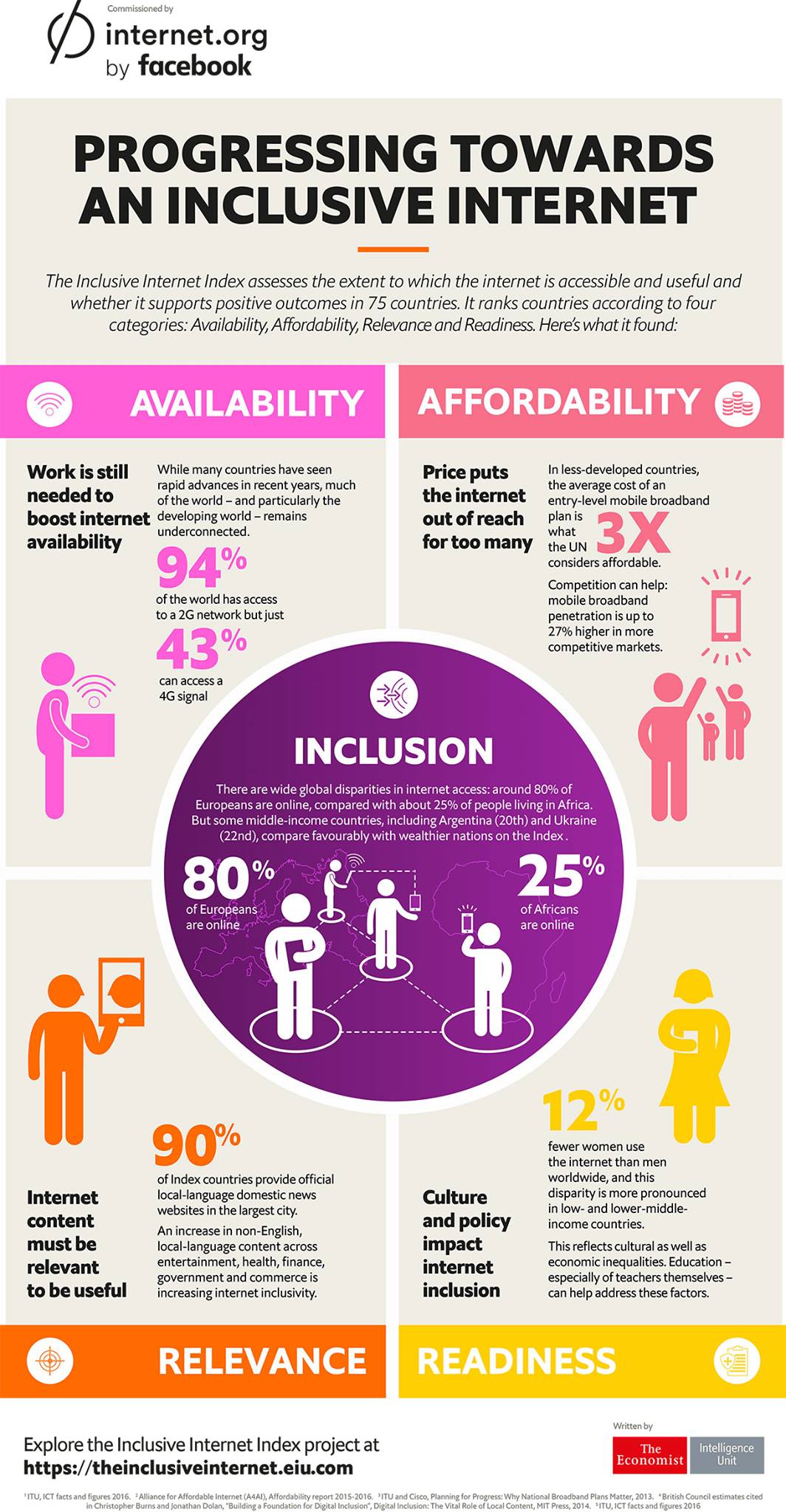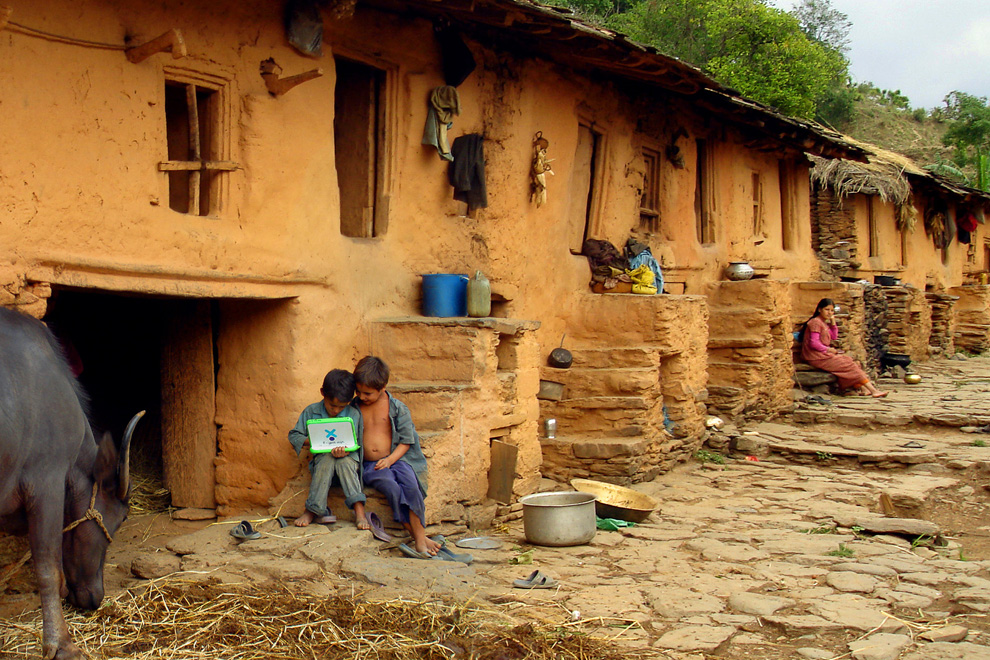 Mark Zuckerberg’s Internet.Org initiative nobly commits to connecting the world to information by ensuring that the remaining five billion humans living in remote and developing regions have access to the Internet. To that end he and the consortium of technology enterprises enlisted to the mission are expending millions of dollars in an effort to devise new ways to inexpensively deliver high speed broadband to the vast and currently unwired expanses of Africa, Asia and Latin America. It is admirable to read about the proliferation of Free Basics and trials using solar drones and lasers; but are these technologies really going to solve the connectivity problem in our lifetime? Or within the lifetimes of those billions in the developing world that we are trying to connect?
Mark Zuckerberg’s Internet.Org initiative nobly commits to connecting the world to information by ensuring that the remaining five billion humans living in remote and developing regions have access to the Internet. To that end he and the consortium of technology enterprises enlisted to the mission are expending millions of dollars in an effort to devise new ways to inexpensively deliver high speed broadband to the vast and currently unwired expanses of Africa, Asia and Latin America. It is admirable to read about the proliferation of Free Basics and trials using solar drones and lasers; but are these technologies really going to solve the connectivity problem in our lifetime? Or within the lifetimes of those billions in the developing world that we are trying to connect?
High speed broadband alone will not accomplish the mission of connecting the more-than-half earth’s population that lives today without Internet access. The skies can be littered with wireless drone connection points, lasers at-the-ready, but whither the web devices to connect with? To whom will fall the obligation to finance and deploy the billions of compatible devices necessary to make the Internet connection? How will literacy, educational and cultural obstacles factor? What role must governments and NGOs play?
Deploying high speed broadband does not put compatible devices in the hands of users. It does not provide a connection that is adaptable to the existing install-base of handsets that are actually in the hands of those we are trying to connect.
Ironically, Internet.Org points to the true solution as it shares its research into the problem. They’ve simply drawn the wrong conclusion from the results (their infographic appears beneath this post). In the study released last year they cite that 94% of the world’s population has access to a 2G wireless connection – one that supports conventional telephony and texting – but only 43% of the world has access to 4G high speed broadband that supports the developed world’s model of a visual-centric mobile Internet. Internet.Org concludes from this data that the problem is not enough 4G broadband. SaraConnects looks at the data and concludes that we should deploy an Internet interface that is optimized for 94% of the planet with their existing infrastructure and ubiquitous device install base.
Overlooked in the study is that the 94% 2G wireless infrastructure pervasive worldwide can support voice service to 100% of all handsets in use today, and that in the 57% of the globe where high-speed broadband is not yet available, the penetration of 2G handsets approaches 100% of the population. Their research does indicate that in less developed regions Internet services cost nearly triple what the UN considers affordable; that affordability does not even consider the cost of acquiring an access device. Putting enough solar drones into service and maintaining them will have a cost that won’t likely ameliorate this challenge.
There’s no doubt that a cohesive high-speed broadband infrastructure is essential to the proliferation of a next-generation Internet in developing regions. But it may take decades for those populations to access it. There is no better lesson in how best laid plans race ahead at snail’s pace than the One Laptop per Child initiative.
Launched nearly a decade ago, One Laptop per Child was born of the desire to equip all the world’s children with technology to make them digitally competent by creating and massively deploying a sub-$100 laptop. The strategy – make the device so inexpensive that it could be rolled out on grand scale to children worldwide by governments, school districts and institutions. When they first began deploying devices in 2008, the world’s population was just above 6.7 billion. Today the population exceeds 7.5 billion. Guess how many of the 800 million born in the ensuing ten years have obtained an OLPC machine? A whopping three million total devices distributed to children and their teachers. That translates to about 0.38% penetration of devices among all children born since inception of OLPC. One laptop per 270 children. Factoring out those children born into the developed world doesn’t really alter the math in an impressive way.
OLPC created a marvelous device with outstanding design and performance, yet it has failed in its mission because even at the low cost (granted, they never achieved the $100 target), the devices were and are not affordable by the target users or their families, and thus acquisition and deployment relies on government mandates, NGO interventions and charitable ventures. Relying on all these disparate shareholders and motivations to collaborate and change the world is problematic at best. Yet this seems to be the same strategy pursued now by Internet.Org. Once the high-speed broadband network is cohesive and airborne 24/7, with overflight rights negotiated between neighboring governments, where will the Internet devices come from to put into the hands of five billion new users? Over what period of time will we accomplish this? If OLPC is any indicator, compatible handset deployment to the neediest populations might be not months or years, but decades or a century away.
Even if Internet.Org could exponentially improve upon the deployment rate of devices, will the upgrade of a few million handsets per year have any impact on billions still disconnected? What about the education and training to get these new web users acclimated to their new, literacy-requiring, eyesight-requiring devices?
Meanwhile, a technology that can truly be claimed as ubiquitous today among our planet’s inhabitants is the telephone. The supporting infrastructure is cohesive (94% coverage) and the install-base of compatible handsets pervasive. If the mission is to connect the next five billion of earth’s citizens in a realistic timeframe, we should be doing so by deploying an Internet platform compatible with the existing install-base of devices in-use, not future devices yet to be designed and deployed.
Let’s be honest. Some of the technology companies enlisted in the Internet.Org initiative, despite their greatest stated intentions, are in this because of their interest to open vast new markets and become the preferred hardware infrastructure suppliers or manufacturers of these next five billion handsets. As we’ve learned from OLPC, these parties’ interests may not in the long term lead to accomplishing the actual mission of connecting the world. Ultimately, someone will need to pay for and distribute all those new handsets and the OLPC approach to addressing this problem has been proven ineffective.
So while Internet.Org should certainly maintain a focus on creating the infrastructure for a next-generation Internet for the developing world, SaraConnects respectfully proposes a second, far less expensive and far more ambitious and equally critical tactic to achieve the mission in the near-term: deployment of a first-generation Internet that is compatible with the current technologies familiar to the developing world and all mankind.
Guidance for Mark and Internet.Org? Enlist SaraConnects and deploy the universal telephonic mobile web browser to instantly convert any telephone into a personalized and interactive Internet interface. We can accomplish in months, not decades, the stated objective of connecting the world. The Economist World Intelligence Unit recently said: “For people to benefit from the Internet, it must not only be available and affordable. It also must be relevant to their lives and they must have the skills and confidence to use it.” That’s the mission of SaraConnects. Sara’s proprietary technology is designed to instantly transform any telephone into a smart device with a user experience akin to radio. Access requires only a dialed telephone call or text. No apps, no data, no gigs, no restrictions. Sara’s artificial intelligence learns with every interaction and is optimized for audio and voice. Sara is designed for rapid deployment so connecting the world’s unconnected billions happens rapidly and for a fraction of the ultimate cost of deploying broadband, computer-centric alternatives.
We are in formative stage now and seeking partners to propel this forward. If you would like to help Sara and Internet.Org in connecting the world, you can start by liking this article and sharing it to your friends and networks and joining our cause at https://saraconnects.world/contact. When you share please consider including the hashtag #saraconx
Mark, let’s do this. Let’s get on with connecting the world. robert@saraconnects.world.







